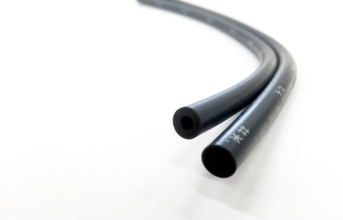
Production of biohydrin rubber uses a variety of compound technologies for bonding plant-derived materials with petroleum-derived materials at the molecular level. These technologies ensure that biohydrin rubber provides the levels of oil resistance, heat resistance, and durability required for vacuum sensing hoses in engines and drive systems.
Additionally, biohydrin rubber is similar to conventional petroleum-based hydrin rubber in terms of quality and mass producibility, enabling large-scale use in commercial vehicles. In the future, Toyota plans to expand the usage of biohydrin to other high-performance rubber components, such as brake hoses and fuel line hoses.
Using biohydrin rubber in vehicles represents a small but important step toward meeting a range of ambitious environmental targets outlined by Toyota in October 2015. Collectively referred to as the Toyota Environmental Challenge 2050, these targets represent the company's comprehensive roadmap for contributing to global environmental sustainability.
Going forward, Toyota will continue to develop and commercialize technologies that enable the use of materials like Ecological Plastic and biosynthetic rubber in a wider range of components.
*Hoses used in engine intake system components. They have connected pressure sensors that detect negative pressure in intake manifolds.
END


























